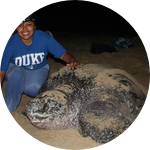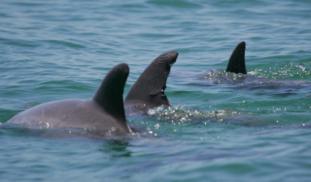Please wait...
About This Project
Has increased tourism in Belize impacted the dolphin population? In the late 1990s, Self-Sullivan and her peers determined that mangrove cayes provided foraging and nursery habitat for dolphins and manatees in Belize. It was predicted that increasing cruise ship tourism would have negative effects on the dolphin population. With your help, we will test that hypothesis and determine changes in the population structure, habitat use, and behavior.

Browse Other Projects on Experiment
Related Projects
How do polar bears stay healthy on the world's worst diet?
Polar bears survive almost entirely on seal fat. Yet unlike humans who eat high-fat diets, polar bears never...
Uncovering hidden insect diversity associated with a likely undescribed gall-forming midge
Does a likely undescribed species of gall-forming midge (pers. comm. Ray Gagné) on Eriodictyon plants (Yerba...
Macrofungi of the California archipelago
The eight islands of the California Archipelago are a well-studied biodiversity hotspot — but we know almost...


